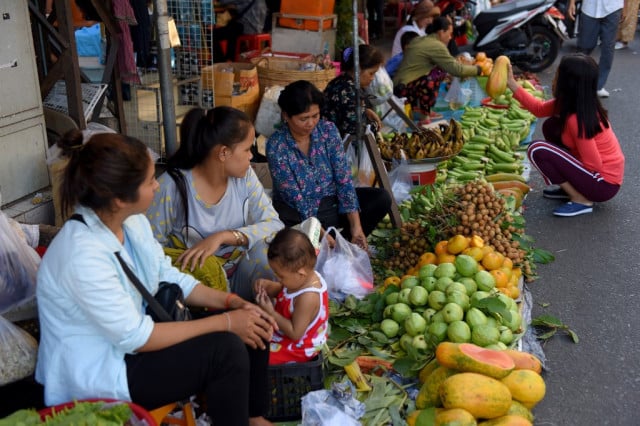UN says Cambodia’s undernourishment rate declines

- Thmey Thmey
- July 16, 2019 9:12 AM
Food insecurity is meanwhile lower than in Philippines
PHNOM PENH--Undernourishment has declined in Cambodia but still remains relatively high compared with other countries in Southeast Asia, according to a UN report.
The State of Food Security and Nutrition in the World report released in New York Monday said the prevalence of undernourishment was 16.4 percent in 2016-2018.
That was down from 20.0 percent of the population in 2004-2016 and sharply lower than Timor Leste (24.9 percent) and slightly below Laos (16.5 percent).
But Cambodia's rate of undernourishment was higher than in Myanmar (10.6 percent), Vietnam (9.3 percent) and other ASEAN countries.
The prevalence of severe food insecurity in Cambodia meanwhile fell from 17.1 percent in 2014-2016 to 14.2 percent in 2016-2018, the report said.
That was lower than in the Philippines (15.0 percent) but higher than in Vietnam (2.3 percent). Data for Laos, Myanmar and Timor Leste were not available.
Cambodia’s prevalence of moderate or severe food insecurity — a new indicator — dropped from 48.9 percent to 44.9 percent over the same period.
That was also lower than in the Philippines (52.5 percent) and higher than in Vietnam (14.5 percent). Data for Laos, Myanmar and Timor Leste were also not available.
The report was compiled by the Food and Agriculture Organization of the United Nations (FAO), the International Fund for Agricultural Development (IFAD), the UN Children's Fund (UNICEF), the World Food Programme (WFP) and the World Health Organization (WHO).
A joint statement said the new indicator of moderate or severe food insecurity was based on surveys about access to food over the previous 12 months.
"People experiencing moderate food insecurity face uncertainties about their ability to obtain food and have had to reduce the quality and/or quantity of food they eat to get by,” the statement said.
The report estimated that more than 2 billion people worldwide — mainly in low and middle-income countries — don't have regular access to safe, nutritious and sufficient food.
"But irregular access is also a challenge for high-income countries, including 8 percent of the population in Northern America and Europe,” the statement said.
"This calls for a profound transformation of food systems to provide sustainably-produced healthy diets for a growing world population.















